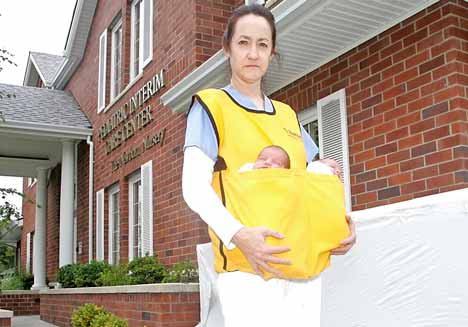Every day that Barbara Drennen goes to work as the executive director of the Pediatric Interim Care Center in downtown Kent, she sees the 4-foot-high, concrete-block flood wall wrapped in white plastic that surrounds her building.
The center had the $35,000 wall installed last fall in case the Howard Hanson Dam fails to keep the Green River from flooding.
Even though the U.S. Army Corps of Engineers could not operate the dam at full capacity last winter because of a damaged abutment next to the dam, the center had no flood problems, thanks to a mild winter with no major rainstorms.
But with the dam still not operating at full capacity, Drennen and many other Green River Valley property owners and businesses are facing a second straight winter of potential flooding.
“I’m just praying an awful lot,” said Drennen, whose center provides specialized, 24-hour care for drug-exposed and medically fragile newborns. “The prayers start flowing that nothing happens.”
The corps has lowered the threat of Green River flooding this winter to 1 in 60 – from a 1-in-33 chance last year – because of installation of a grout curtain last year that stood up to summer tests to allow for more storage capacity in the reservoir behind the dam.
“We’ve made progress but there is still work to do,” said Casondra Brewster, an Army Corps public affairs specialist in Seattle. “The grout curtain is performing as well or better than we expected.”
But the odds of flooding climb to just 1 in 140 when the dam is fully operational. An additional $44 million in repairs, including more drains and the extension of the existing drainage tunnel to put the dam back at its top level, will not be completed until after this flood season.
“When it’s all said and done, it will be the end of 2012 before we are completely finished,” Brewster said of the repairs to be done in phases over the next year. “Then we will see how good everything is.”
Drennen didn’t even know if the care center, 328 Fourth Ave. S., could remain in Kent because of the flood threat. Donations from the Joshua Green Foundation of Seattle, Puget Sound Energy and the The D.V. and Ida J. McEachern Charitable Trust of Seattle helped pay for the flood wall. The center also had to install stairway ramps over the wall for access between parking lots and the building.
The center worked out an agreement with Valley Medical Center in Renton to set aside a room for the babies if they have to be evacuated from the Kent site, which houses an average of about 13 babies per day.
The babies stay at the center for about a month. As soon as they are stable, the state Department of Social and Health Services moves the babies to homes – the dwellings of a parent, other relative or foster care.
The nearly 60 employees at the Pediatric Interim Care Center practice emergency evacuations every few months whether it’s for a flood, earthquake, fire or some other calamity. The facility even has evacuation vests for the nurses that can carry as many as four babies, two in the front and two in the back.
The nonprofit center receives about half of its funding from the state and the rest from private donations, said Elaine Purchase, the Pediatric Interim Care development director.
Pediatric Interim Care opened in 1990 in Kent and moved to its current site in 2006 when it built a $4 million facility designed specifically to provide care for drug-exposed newborns.
“At first, until we knew the flood risk, we thought we would have to move,” Purchase said. “We looked at medical buildings and it was going to cost about $1 million to upgrade the buildings. It was so wonderful they were able to install the grout curtain and lower the risk.”
The grout curtain helped control the problems with water storage behind the dam that were discovered by the corps when a 10-foot-wide depression formed on the embankment next to the dam after heavy rain in January 2009. The corps stored a record amount of water in the reservoir during that storm to prevent flooding.
The abutment next to the dam was formed nearly 10,000 years ago by a landslide. The federal government built the rock-and earth-fill Hanson dam in 1961 next to the abutment to control major flooding in the Green River Valley and the cities of Kent, Auburn, Tukwila and Renton. The dam is about 25 miles east of Kent.
This winter, however, property owners and residents must once again prepare for flooding.
“We may not get the nice pass on winter weather,” Purchase said. “It’s supposed to be wetter. We’re keeping our flood wall. We feel we’ve made good preparation plans. We have flood insurance.”
Drennen and Purchase hope they have see the flood wall every day just one more winter.
“We’d love to take it down next spring,” Drennen said. “But that doesn’t mean we will be able to.”
Talk to us
Please share your story tips by emailing editor@kentreporter.com.
To share your opinion for publication, submit a letter through our website https://www.kentreporter.com/submit-letter/. Include your name, address and daytime phone number. (We’ll only publish your name and hometown.) Please keep letters to 300 words or less.

